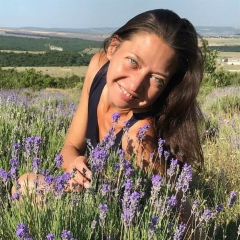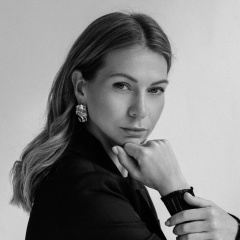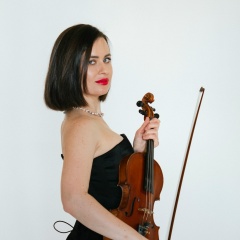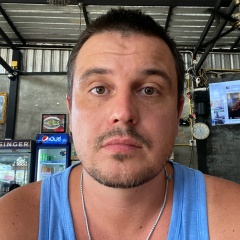Зимнее Солнцестояние - 21 декабря - Коляда
21 декабря в 17ч. 11м. по Гринвичу (21 декабря 21ч. 11м. Москва) произойдет зимнее солнцестояние.
Солнце, двигаясь по эклиптике, в этот момент достигнет самого удалённого положения от небесного экватора в сторону южного полюса Мира. В северном полушарии планеты наступит астрономическая зима, а в южном полушарии - лето.
При этом в северном полушарии наблюдается самый короткий световой день и самая длинная ночь.
В день зимнего солнцестояния Солнце восходит на юго-востоке, а заходит на юго-западе, описывая самую короткую дугу на небосводе.
На протяжении тысячелетий этот день имел огромное значение для всех народов, которые жили в гармонии с природными циклами и организовывали свою жизнь в соответствии с ними.
В культуре многих народов на основе зимнего солнцестояния основаны циклические календари, празднуется возрождающийся год, этот день – символ «новых начинаний».
С самых давних времен люди почитали Солнце, понимая, что от его света и тепла зависит их жизнь на земле. Для них день зимнего солнцестояния олицетворял победу света над тьмой. В эти дни говорили: «В самой глубокой тьме рождается свет».
Большинство народов расценивали зимнее солнцестояние как возрождение, устраивая праздники, фестивали, и другие торжества. День зимнего солнцестояния называли Днем Непобедимого Солнца, днем рождения или возрождения Солнца, потому что с этого дня Солнце начинает свое движение в сторону Весны, к возрождению природы и всего живого на Земле.
Зимнее солнцестояние для наших предков было мистическим. Это праздник рождения нового Солнца – Коляда.
Коляда, Корочун - праздник новолетия у славян.
Коляда - Колядки, или некоторые празднуют как Корочун /Короткий День/, он же Карачун, он же Колотун, он же Калачин (Коло - круг. Чун /тун, тин/ - день.).
Все славянские праздники были приурочены к астрологическим /астрономическим/ датам.
Распространенными были в это время "шуточные" женитьбы, своеобразные игры. Примером такого рода игр являются аналоги "ручейка", все возможные "догонялки" парнями девушек, "бояре" и другие. В атмосфере игры, "недействительности", юмора молодежь знакомилась и разбивалась по парам гораздо охотнее, и очень часто случалось, что составленные во время игр пары летом или под осень устраивали настоящую свадьбу.
Жгли костер, под утро из этого праздничного костра разносили уголья для возжигания печей.
Водой, настоянной на угольях от костра, поили скот, детей, мыли ею полы. А остатки высыпались возле порога.
С утра устраивалось пиршество, игрища, гульба. В следующую ночь запускали новую Балду и на следующую ночь тоже.
На второй день нельзя было пировать у себя дома - шли по гостям. По очереди друг к дружке.
В последнее утро праздника, из общего костра, приносили "Новый огонь" в печь, которую до того необходимо было обязательно прочистить от золы, и желательно побелить. Скотину кормили хлебом, и поили травяными отварами.
Все обязательно мылись в бане, и приступали к семейному застолью. («Где остатьню ночь проведешь, там "год" и проживешь!»)
После застолья, девки запирались в бане и гадали, а парни устраивали игрища у костра, в который, с последним лучом солнца, последний раз подкладывали дрова.
Устраивались прыжки через костер. По одиночке и попарно. При желании можно было дать клятву на верность. Для этого необходимо вдвоем прыгнуть через костер и не разжать при этом рук.
Костер – Краду не тушили, а давали ему догореть самостоятельно.
Коляда - это древний обычай "Преломления хлеба" на "Круг" - "С кем хлеб преломил, - то тебе и брат".
Особое место на этом празднике отводится колядованию, которое происходило на третий день после солнцестояния. Когда ряженные в тотемных животных, олицетворениях Богов, люди носили по домам звезду – символ родившегося солнца. В обрядовой форме колядующие приносили здоровье и благосостояние в новом году. Праздничной песней возвещали о рождении Солнца, после чего колядующих впускали в дом. Коза – символ богатства – во время такого обряда, зайдя в дом падала «замертво», а затем после «откупа» - требы, угощения обрядующим, вновь оживала и плясала, скакала по дому, под хвалебную песню в честь хозяев жилища. Этим ритуалом она уносила все прошлогодние горести людей в Навь и, возродившись, уже несла счастье и здоровье. Так же рядились в Медведя, Коня, Аиста и других животных.
Праздник зимнего солнцестояния несет в себе огромное
значение, определяя каким будет весь следующий год.
21 декабря в 17ч. 11м. по Гринвичу (21 декабря 21ч. 11м. Москва) произойдет зимнее солнцестояние.
Солнце, двигаясь по эклиптике, в этот момент достигнет самого удалённого положения от небесного экватора в сторону южного полюса Мира. В северном полушарии планеты наступит астрономическая зима, а в южном полушарии - лето.
При этом в северном полушарии наблюдается самый короткий световой день и самая длинная ночь.
В день зимнего солнцестояния Солнце восходит на юго-востоке, а заходит на юго-западе, описывая самую короткую дугу на небосводе.
На протяжении тысячелетий этот день имел огромное значение для всех народов, которые жили в гармонии с природными циклами и организовывали свою жизнь в соответствии с ними.
В культуре многих народов на основе зимнего солнцестояния основаны циклические календари, празднуется возрождающийся год, этот день – символ «новых начинаний».
С самых давних времен люди почитали Солнце, понимая, что от его света и тепла зависит их жизнь на земле. Для них день зимнего солнцестояния олицетворял победу света над тьмой. В эти дни говорили: «В самой глубокой тьме рождается свет».
Большинство народов расценивали зимнее солнцестояние как возрождение, устраивая праздники, фестивали, и другие торжества. День зимнего солнцестояния называли Днем Непобедимого Солнца, днем рождения или возрождения Солнца, потому что с этого дня Солнце начинает свое движение в сторону Весны, к возрождению природы и всего живого на Земле.
Зимнее солнцестояние для наших предков было мистическим. Это праздник рождения нового Солнца – Коляда.
Коляда, Корочун - праздник новолетия у славян.
Коляда - Колядки, или некоторые празднуют как Корочун /Короткий День/, он же Карачун, он же Колотун, он же Калачин (Коло - круг. Чун /тун, тин/ - день.).
Все славянские праздники были приурочены к астрологическим /астрономическим/ датам.
Распространенными были в это время "шуточные" женитьбы, своеобразные игры. Примером такого рода игр являются аналоги "ручейка", все возможные "догонялки" парнями девушек, "бояре" и другие. В атмосфере игры, "недействительности", юмора молодежь знакомилась и разбивалась по парам гораздо охотнее, и очень часто случалось, что составленные во время игр пары летом или под осень устраивали настоящую свадьбу.
Жгли костер, под утро из этого праздничного костра разносили уголья для возжигания печей.
Водой, настоянной на угольях от костра, поили скот, детей, мыли ею полы. А остатки высыпались возле порога.
С утра устраивалось пиршество, игрища, гульба. В следующую ночь запускали новую Балду и на следующую ночь тоже.
На второй день нельзя было пировать у себя дома - шли по гостям. По очереди друг к дружке.
В последнее утро праздника, из общего костра, приносили "Новый огонь" в печь, которую до того необходимо было обязательно прочистить от золы, и желательно побелить. Скотину кормили хлебом, и поили травяными отварами.
Все обязательно мылись в бане, и приступали к семейному застолью. («Где остатьню ночь проведешь, там "год" и проживешь!»)
После застолья, девки запирались в бане и гадали, а парни устраивали игрища у костра, в который, с последним лучом солнца, последний раз подкладывали дрова.
Устраивались прыжки через костер. По одиночке и попарно. При желании можно было дать клятву на верность. Для этого необходимо вдвоем прыгнуть через костер и не разжать при этом рук.
Костер – Краду не тушили, а давали ему догореть самостоятельно.
Коляда - это древний обычай "Преломления хлеба" на "Круг" - "С кем хлеб преломил, - то тебе и брат".
Особое место на этом празднике отводится колядованию, которое происходило на третий день после солнцестояния. Когда ряженные в тотемных животных, олицетворениях Богов, люди носили по домам звезду – символ родившегося солнца. В обрядовой форме колядующие приносили здоровье и благосостояние в новом году. Праздничной песней возвещали о рождении Солнца, после чего колядующих впускали в дом. Коза – символ богатства – во время такого обряда, зайдя в дом падала «замертво», а затем после «откупа» - требы, угощения обрядующим, вновь оживала и плясала, скакала по дому, под хвалебную песню в честь хозяев жилища. Этим ритуалом она уносила все прошлогодние горести людей в Навь и, возродившись, уже несла счастье и здоровье. Так же рядились в Медведя, Коня, Аиста и других животных.
Праздник зимнего солнцестояния несет в себе огромное
значение, определяя каким будет весь следующий год.
Winter Solstice - December 21 - Kolyada
December 21 at 17h. 11m GMT (December 21, 21h. 11m. Moscow) there will be a winter solstice.
The sun, moving along the ecliptic, at this moment will reach the most distant position from the celestial equator towards the south pole of the World. Astronomical winter will come in the northern hemisphere of the planet, and summer in the southern hemisphere.
At the same time, the shortest daylight hours and the longest nights are observed in the northern hemisphere.
On the winter solstice, the Sun rises in the southeast, and sets in the southwest, describing the shortest arc in the sky.
For millennia, this day has been of great importance to all peoples who lived in harmony with the natural cycles and organized their lives in accordance with them.
In the culture of many nations, cyclic calendars are based on the winter solstice, the reviving year is celebrated, this day is a symbol of “new beginnings”.
From the earliest times, people worshiped the Sun, realizing that their life on earth depends on its light and heat. For them, the winter solstice represented the victory of light over darkness. These days they said: "In the deepest darkness, light is born."
Most peoples regarded the winter solstice as a rebirth, arranging holidays, festivals, and other celebrations. The winter solstice was called the Day of the Invincible Sun, the day of the birth or rebirth of the Sun, because from this day the Sun begins its movement towards Spring, to the revival of nature and all life on Earth.
The winter solstice for our ancestors was mystical. This is the celebration of the birth of the new Sun - Kolyada.
Kolyada, Korochun - a New Year holiday among the Slavs.
Carols - Carols, or some celebrate as Korochun / Short Day /, aka Karachun, aka Kolotun, aka Kalachin (Kolo - circle. Chun / tun, tin / - day.).
All Slavic holidays were timed to astrological / astronomical / dates.
“Comic” marriages and peculiar games were common at that time. An example of this kind of games are the analogs of "brook", all the possible "catch-up" by the girls' boys, "boyars" and others. In the atmosphere of the game, "invalidity", humor, young people got acquainted and split up in pairs much more willingly, and very often it happened that couples composed during the games in the summer or in the fall arranged a real wedding.
They burned a fire, in the morning from this holiday bonfire they brought coal to kindle stoves.
Water infused with charcoal from a bonfire was watered by cattle, children, and their floors were washed. And the remnants spilled out near the threshold.
In the morning, a feast, games, and a gulba were arranged. The next night they launched a new Balda and the next night, too.
On the second day it was impossible to have a feast at home - we went around the guests. In turn, to each other.
On the last morning of the holiday, from a common fire, they brought "New Fire" into the furnace, which before that had to be cleaned of ash, and it was advisable to whitewash it. They fed the cattle with bread, and watered with herbal decoctions.
Everyone was washed in the bath, and proceeded to a family feast. (“Where you spend the rest of the night, there is a“ year ”and you will live!”)
After the feast, the girls locked themselves in a bathhouse and wondered, and the guys arranged games by the fire, in which, with the last ray of sunshine, the last time they put firewood.
Jumping was arranged over the fire. One by one and in pairs. If you wish, you could swear allegiance. To do this, you need to jump over the fire together and not unclench your hands.
Bonfire - They didn’t put out the steal, but let it burn out on their own.
Kolyada is an ancient custom of “Refraction of bread” on the “Circle” - “With whom he broke bread, then you and brother.”
A special place in this holiday is given to caroling, which occurred on the third day after the solstice. When mummers in totem animals, the personifications of the Gods, people carried a star in their homes - a symbol of the born sun. In ritual form carols brought health and well-being in the new year. They celebrated the birth of the Sun with a festive song, after which they allowed carols into the house. A goat - a symbol of wealth - during such a rite, going into the house fell “dead”, and then after the “redemption” - trebas, treating the rites, revived and danced again, rode around the house, to a laudatory song in honor of the homeowners. With this ritual, she carried away all last year’s sorrows of people in Nav and, having been revived, already carried happiness and health. They also dressed in Bear, Horse, Stork and other animals.
The festival of the winter solstice carries a huge
value, determining what will be the next year.
December 21 at 17h. 11m GMT (December 21, 21h. 11m. Moscow) there will be a winter solstice.
The sun, moving along the ecliptic, at this moment will reach the most distant position from the celestial equator towards the south pole of the World. Astronomical winter will come in the northern hemisphere of the planet, and summer in the southern hemisphere.
At the same time, the shortest daylight hours and the longest nights are observed in the northern hemisphere.
On the winter solstice, the Sun rises in the southeast, and sets in the southwest, describing the shortest arc in the sky.
For millennia, this day has been of great importance to all peoples who lived in harmony with the natural cycles and organized their lives in accordance with them.
In the culture of many nations, cyclic calendars are based on the winter solstice, the reviving year is celebrated, this day is a symbol of “new beginnings”.
From the earliest times, people worshiped the Sun, realizing that their life on earth depends on its light and heat. For them, the winter solstice represented the victory of light over darkness. These days they said: "In the deepest darkness, light is born."
Most peoples regarded the winter solstice as a rebirth, arranging holidays, festivals, and other celebrations. The winter solstice was called the Day of the Invincible Sun, the day of the birth or rebirth of the Sun, because from this day the Sun begins its movement towards Spring, to the revival of nature and all life on Earth.
The winter solstice for our ancestors was mystical. This is the celebration of the birth of the new Sun - Kolyada.
Kolyada, Korochun - a New Year holiday among the Slavs.
Carols - Carols, or some celebrate as Korochun / Short Day /, aka Karachun, aka Kolotun, aka Kalachin (Kolo - circle. Chun / tun, tin / - day.).
All Slavic holidays were timed to astrological / astronomical / dates.
“Comic” marriages and peculiar games were common at that time. An example of this kind of games are the analogs of "brook", all the possible "catch-up" by the girls' boys, "boyars" and others. In the atmosphere of the game, "invalidity", humor, young people got acquainted and split up in pairs much more willingly, and very often it happened that couples composed during the games in the summer or in the fall arranged a real wedding.
They burned a fire, in the morning from this holiday bonfire they brought coal to kindle stoves.
Water infused with charcoal from a bonfire was watered by cattle, children, and their floors were washed. And the remnants spilled out near the threshold.
In the morning, a feast, games, and a gulba were arranged. The next night they launched a new Balda and the next night, too.
On the second day it was impossible to have a feast at home - we went around the guests. In turn, to each other.
On the last morning of the holiday, from a common fire, they brought "New Fire" into the furnace, which before that had to be cleaned of ash, and it was advisable to whitewash it. They fed the cattle with bread, and watered with herbal decoctions.
Everyone was washed in the bath, and proceeded to a family feast. (“Where you spend the rest of the night, there is a“ year ”and you will live!”)
After the feast, the girls locked themselves in a bathhouse and wondered, and the guys arranged games by the fire, in which, with the last ray of sunshine, the last time they put firewood.
Jumping was arranged over the fire. One by one and in pairs. If you wish, you could swear allegiance. To do this, you need to jump over the fire together and not unclench your hands.
Bonfire - They didn’t put out the steal, but let it burn out on their own.
Kolyada is an ancient custom of “Refraction of bread” on the “Circle” - “With whom he broke bread, then you and brother.”
A special place in this holiday is given to caroling, which occurred on the third day after the solstice. When mummers in totem animals, the personifications of the Gods, people carried a star in their homes - a symbol of the born sun. In ritual form carols brought health and well-being in the new year. They celebrated the birth of the Sun with a festive song, after which they allowed carols into the house. A goat - a symbol of wealth - during such a rite, going into the house fell “dead”, and then after the “redemption” - trebas, treating the rites, revived and danced again, rode around the house, to a laudatory song in honor of the homeowners. With this ritual, she carried away all last year’s sorrows of people in Nav and, having been revived, already carried happiness and health. They also dressed in Bear, Horse, Stork and other animals.
The festival of the winter solstice carries a huge
value, determining what will be the next year.

У записи 12 лайков,
4 репостов.
4 репостов.
Эту запись оставил(а) на своей стене Екатерина Снегирева































